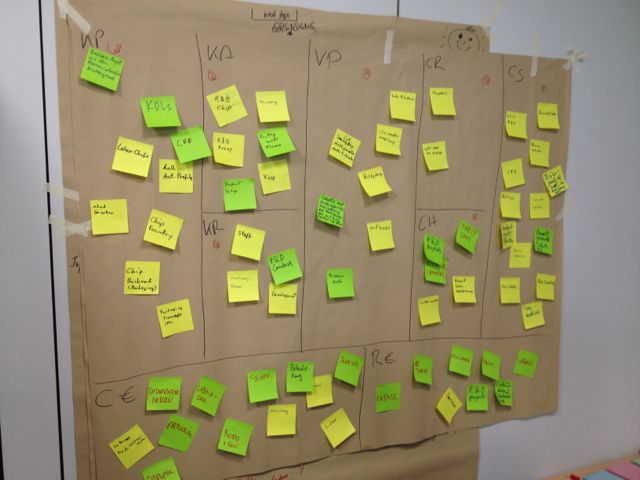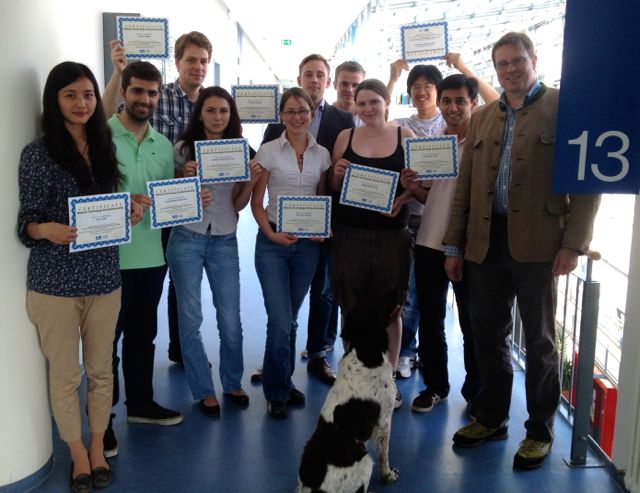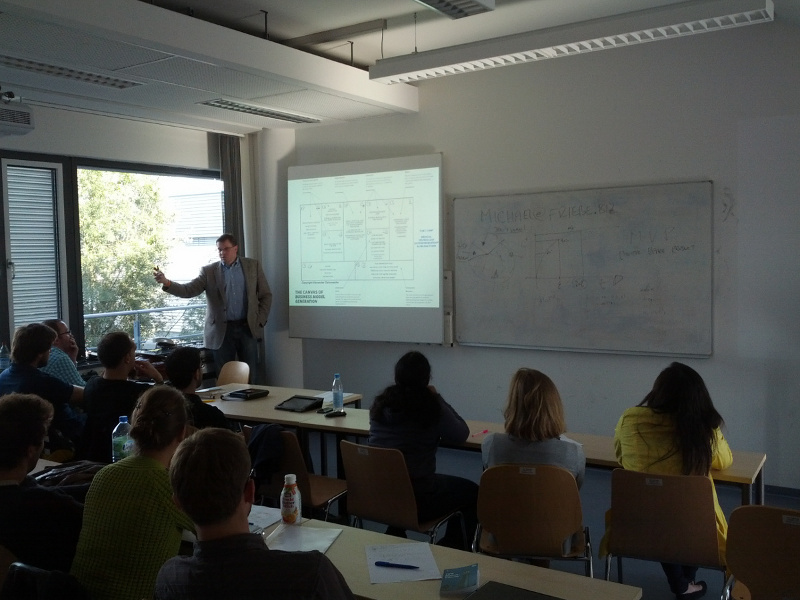Medical Technology Entrepreneurship winter term 2012/2013
Administrative InfoLecture: Dr. Michael FriebeTutor: Philipp Matthies Type: Lecture Module IN9038 Programs: Informatics (Bachelor, Master) Biomedical Computing (Master) Information Systems (Wirtschaftsinformatik) (Bachelor, Master) SWS: 2 ECTS: 4 Credits Course Language: English |
Time, Location & RequirementsLecture: The lecture will be held in 5 afternoon blocks of 4,5 hours each (1.00 p.m. to 5.30 p.m.), the dates are:
Location: MI 03.13.010 Please note that the lecturer will be available 1 hours prior to and 1 hour after the lecture in room MI 03.13.054. Requirements:
|
||||
Announcements
AssignmentsThere will be 3 assignments to be done after which a jury of experts evaluate the students' performance. The assignments will be done in teams of 3 people. A business plan teaser (8 pages) will be prepared and presented to the group and finally a full blown business plan (20 pages) will be written and presented accompanied by a one page teaser document to highlight your business idea and its financing. |
Photos
|
Overview
 Medical Technology, especially Imaging and Diagnostics (including image guided therapies), is a highly innovative life science segment, which differs significantly from other apparently related areas. The innovation is not limited to products but also includes services, and the cycle of innovation (apart from production and distribution) comprises a large variety of professions, e.g. physicians, engineers, physicists, administrators, and health insurance staff. Compared to other industrial branches these products and services are usually developed faster and cheaper; hence, they are quicker to market. That means rapid results -- be it success or failure. Most innovation is conceived and initially commissioned in close cooperation between users and engineers / scientists. It is a tough road from an initial idea or concept to a product or service however. For scientist used to working in a regulated environment it is a very difficult step to take their own idea or prototype to the next level -- make a product out of it, create a company, think in terms of usability and marketability, and convince others of their idea and conceptual proposals. This talk will give an insight into the challenges and excitements of being a medical technology entrepreneur. The goal is to introduce the gist of a new lecture, which shall teach students how to evaluate market potentials, how to analyze decision making and customer handling, and how to organize sales channels. The basics about being an entrepreneur – which qualifications are needed, which organization, management, finance, strategic issues are suitable in the medical technology market – are covered in the proposed lecture. An assignment will give students a hands-on experience how to provide a realistic and sellable business concept for their own ideas or for a medical technology challenge provided by the lecturer. Lecture Content
|


|
Lecture Schedule
In addition to the lecture there will be talks by several experts from the domain of medical technology.Readings
- HARVARD BUSINESS REVIEW on ENTREPRENEURSHIP -- ISBN 978-0-87584-910-2
- Alexander Osterwalder -- Business Model Generation -- ISBN 978-0470876411
| TeachingForm | |
|---|---|
| Title: | Medical Technology Entrepreneurship |
| Professor: | Dr. Michael Friebe |
| Tutors: | Philipp Matthies |
| Type: | Lecture |
| Information: | 2 SWS, 4 ECTS Credits (Module IN9038) |
| Term: | 2012WiSe |
| Abstract: | Medical Technology and Diagnostics (including image guided therapies) is a highly innovative life science segment, which differs significantly from other apparently related areas. The innovation is not limited to products but also includes services, and the cycle of innovation (apart from production and distribution) comprises a large variety of professions, e.g. physicians, engineers, physicists, administrators, and health insurance staff. Compared to other industrial branches these products and services are usually developed faster and cheaper; hence, they are quicker to market. That means rapid results -- be it success or failure. Most innovation is conceived and initially commissioned in close cooperation between users and engineers / scientists. It is a tough road from an initial idea or concept to a product or service however. For scientist used to working in a regulated environment it is a very difficult step to take their own idea or prototype to the next level -- make a product out of it, create a company, think in terms of usability and marketability, and convince others of their idea and conceptual proposals. This lecture will give an insight into the challenges and excitements of being a medical technology entrepreneur. The goal is to teach students how to evaluate market potentials, how to analyze decision making and customer handling, and how to organize sales channels. The basics about being an entrepreneur – which qualifications are needed, which organization, management, finance, strategic issues are suitable in the medical technology market – are covered in the proposed lecture. Two supervised assignments will give students a hands-on experience how to provide a realistic and sellable business concept for their own ideas or for a medical technology challenge provided by the lecturer. |


